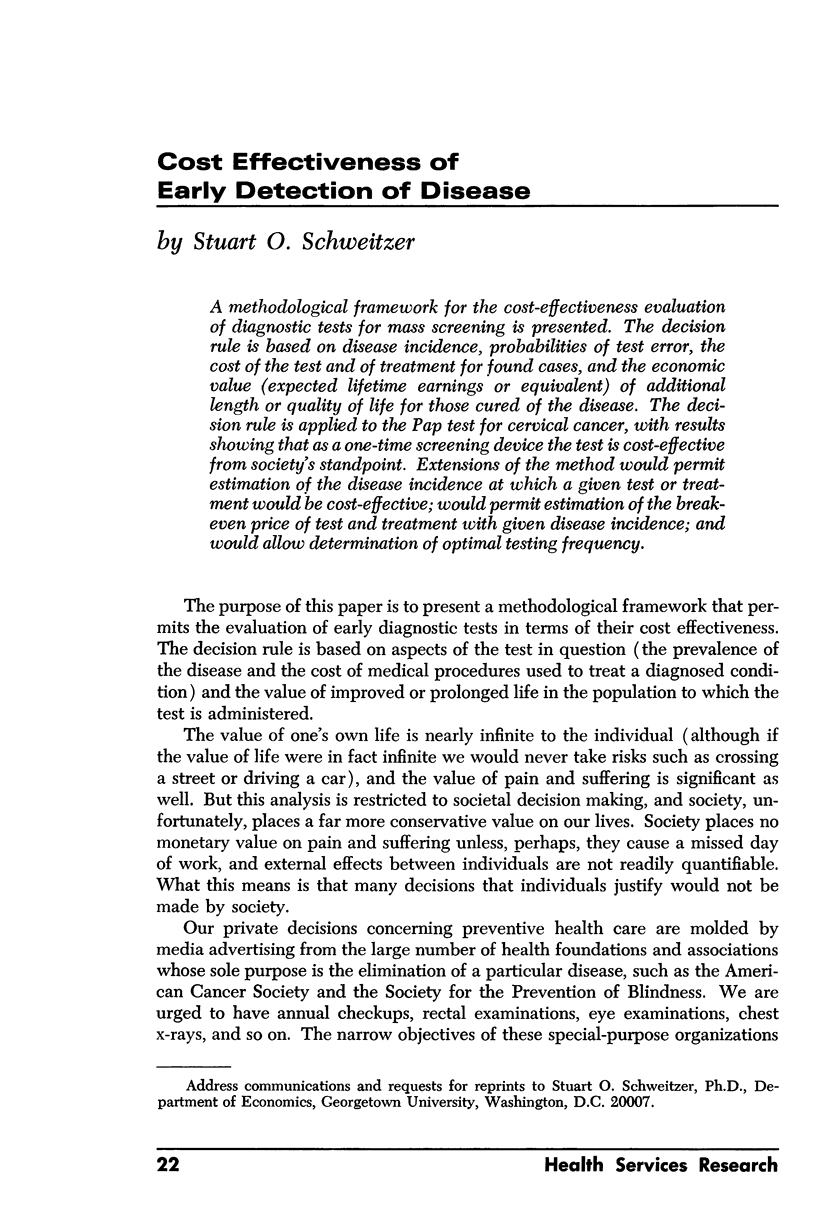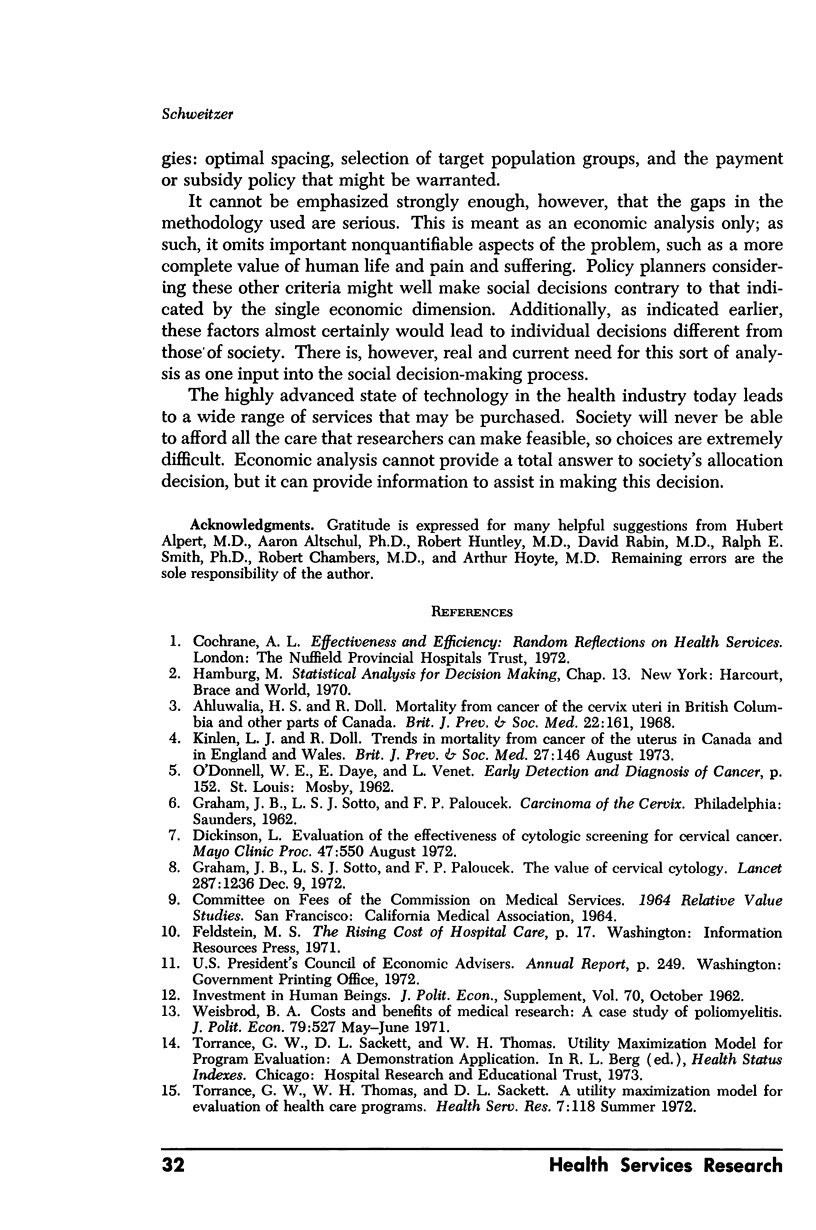Abstract
A methodological framework for the cost-effectiveness evaluation of diagnostic tests for mass screening is presented. The decision rule is based on disease incidence, probabilities of test error, the cost of the test and of treatment for found cases, and the economic value (expected lifetime earnings or equivalent) of additional length or quality of life for those cured of the disease. The decision rule is applied to the Pap test for cervical cancer, with results showing that as a one-time screening device the test is cost-effective from society's standpoint. Extensions of the method would permit estimation of the disease incidence at which a given test or treatment would be cost-effective; would permit estimation of the breakeven price of test and treatment with given disease incidence; and would allow determination of optimal testing frequency.
Full text
PDF










Selected References
These references are in PubMed. This may not be the complete list of references from this article.
- Ahluwalia H. S., Doll R. Mortality from cancer of the cervix uteri in British Columbia and other parts of Canada. Br J Prev Soc Med. 1968 Jul;22(3):161–164. doi: 10.1136/jech.22.3.161. [DOI] [PMC free article] [PubMed] [Google Scholar]
- Dickinson L. Evaluation of the effectiveness of cytologic screening for cervical cancer. 3. Cost-benefit analysis. Mayo Clin Proc. 1972 Aug;47(8):550–555. [PubMed] [Google Scholar]
- Kinlen L. J., Doll R. Trends in mortality from cancer of the uterus in Canada and in England and Wales. Br J Prev Soc Med. 1973 Aug;27(3):146–149. doi: 10.1136/jech.27.3.146. [DOI] [PMC free article] [PubMed] [Google Scholar]
- Torrance G. W., Thomas W. H., Sackett D. L. A utility maximization model for evaluation of health care programs. Health Serv Res. 1972 Summer;7(2):118–133. [PMC free article] [PubMed] [Google Scholar]


